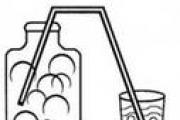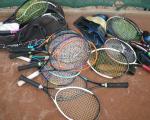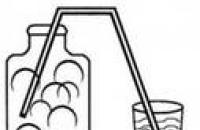Details, as you know, can ruin or save any thing. A product knitted using a variety of techniques will have a complete look if it is complemented with a binding that matches the style. A hook is an indispensable tool when creating an original edge. knitted blouse, dresses, napkins or tablecloths. The tying patterns are so varied that they allow you to decorate with crochet not only the finished item, but also to hide the flaws that often happen when making the edge of the placket, the bottom and other details of a knitted product. In addition to interestingly finishing the edge, crochet patterns are used for elegant finishing of knitting cuffs, collars, tying necks and knitting borders for interior items. Tying the edge with a hook after this article will not become a problem, because we have selected patterns for work especially for you.
The most common methods of edge processing are crayfish step, picot, openwork binding, arched from air loops.
Method of crocheting an edge with diagrams and descriptions
This type is considered the most in a simple way make a beautiful, neat edge; it is especially in demand in children's models. It is most often done with single crochets, which are knitted into a loop to the right of the working loop. This unconventional move - from left to right - explains the name that stuck.
There are several options for knitting a crayfish step, we will show one of them in the video:
Method 2: pico for beginners



Picot is a slightly more complex way of crocheting an edge. Interesting for tying the edges of sleeves, cuffs, hats, berets. There are several ways to knit a picot; based on the thickness of the thread, the number of air loops connected in a picot is selected. The diagram shows different variants of this knitting.

Method 3: arched harness made of air loops
It is made with air loops according to the pattern, is often used in the border of stoles and shawls, and can be supplemented with a variety of tassels.


Method 4: knitting beautiful openwork
How to tie the edge of the product we need using a hook? Openwork, which combines all of the above patterns, as well as many others, which will require more complex patterns to create a beautiful product. The choice of an openwork pattern is always determined by the style, purpose of the product, and depends on the taste of the knitter and her skills in crocheting.
To decorate the bottom of a tablecloth or a large napkin, where you want to knit a beautiful border, you can use the following patterns:





Most common openwork patterns We have compiled a selection of ideas, the diagrams are taken from sources found in the public domain.

1:502
1:512
The final step in crocheting products is tying their sides. This is the final touch in needlework, giving clothes or linen an attractive look, smoothing out minor flaws. Experienced craftswomen perform finishing to create beautiful napkins, towels, and bedding.
1:1066
1:1076
How to crochet the edge of a product
1:1154
Beginning needlewomen will be interested in learning how to beautifully crochet the edge of a knitted item. Popular techniques used in the final stage of finishing include the crayfish step, picot technique and openwork patterns. Each of them will look stylish and sophisticated, and the products will be sophisticated and complemented. Making the necessary techniques is not difficult due to the secrets used.
1:1878
1:9
There are 2 ways of tying:
- directly on things - allows you not to waste time on carefully sewing on individual parts, the thing turns out in a romantic, vintage or ethno style;
- knitting the details of the border and ruffles separately and then stitching them together gives things a retro look.
Finishing the sides of things helps:
- give a new style;
- save appearance products made from loose soft yarn, which can stretch and deform over time;
- decorate;
- hide flaws.

2:1428
2:1438
Crawfish step tying
2:1492
Well-known on the Internet is crocheting the edge of a product using the crayfish step method, used to secure the shape of the item. The knitting is based on single crochets, made in the opposite direction - from left to right. During knitting, the thread crosses in a special way and the pattern looks voluminous, beautiful, at the same time fixes the shape and does not allow the fabric to stretch. It is used for children's sweaters, scarves, and shawls for adults.
To complete this, you need to tie the sides with single crochets around the entire perimeter. After this, the thing does not need to be turned over, but on the same side, insert the tool into the loop to the right of it, pull out and tie the air lifting element. Then you need to insert the hook into the right loop again, grab the thread and knit 2 loops together. Repeat until the whole thing is tied.
2:2980
2:9
How to crochet an edge using the picot technique
2:99
Not only clothes, but also shoes can be crocheted using the picot technique. It looks airy and playful due to its small size. Pico or pique is a chain of several air loops closed in a ring. There are 2 types of this pattern:
2:605
- classic - the hook is inserted into the beginning of the fabric, 3 air loops are cast on, the tool is returned to the beginning of the knitting, the elements are knitted together.
- trefoil - cast on 3 air loops, make a circle using a SS (connecting stitch), knit 3 more air elements, insert the tool at the beginning of the second leaf, knit a third leaf, collect them together with a SS.

3:1827
3:9
Crochet openwork edge
3:63
No less attractive is the openwork crocheting of the edge, which will require more time and perseverance. You will need hook number 1 for the density of the pattern. First, let's look at the notations that appear in the diagrams:
3:476
- VP, VOP - air loop;
- С1Н, СН - column with 1 throw;
- C + number (C3, C4) - a chain of a certain number of VPs;
- BN, SBN - column without throwing.
Knitting the pattern in rows:
- All stitches are knitted in BN.
- 3 VOP, repeat from CH, Ts2, CH, Ts7, skip the loop. To knit the angle Ts13, the last element is connected to the first CH.
- Repeat: BN in Ts2, Ts4, BN in the middle of Ts7, Ts4. In the corners in the middle of Ts13, 2 BN are knitted, with 3 Ts5 between them.
- Similar to the second one.
- Similar to the third, in the corners 3 C6.
- Similar to the second, in the corners of Ts15.
- The same as the third one, in the corners 3 Ts7.
- 3 VP, repeat: CH, Ts2, CH, Ts8. Ts17 is knitted in the corners between the dcs.
- Repeat: all Ts8 are tied with 4 BN, picot clove, 4 BN. Ts19 in the corners are tied: 3 BN, picot clove, 3 BN, picot clove, 3 BN, picot clove, 3 BN.

4:2317
4:9
Patterns for crocheting the edge of a product
4:89
There are simple and complex descriptions and patterns for crocheting the finished product. It is better for beginning craftswomen to start from the basics, gradually complicating the patterns. Experienced needlewomen can try complex but beautiful patterns that will decorate the item and make it more attractive. On the Internet you can find ready-made diagrams with descriptions, photos, master classes, video tutorials - all this will help you understand the issue and put one of the tying methods into practice.
4:919
4:929
Shawl border
4:971
There are several options for crocheting the edge of a shawl:
4:1100
- the finished item is tied with a row of single crochets, turned to make arches: repeat of 3 air loops, 2 passes, 1 single crochet;
- you can simply tie a shawl using any technique (crawfish step, picot) and make a lush fringe - to do this, cut the threads of the required length, fold 3-4 pieces in half, pass through narrow holes along with the braid;
- a border made of 2 rows will be beautiful: in the first, a repeat of 2 yarn overs, an increase in a loop, a yarn over with 2 loops knitted together, 1 yarn over, 1 skip, knitted 4 times with 2 loops each, 1 VP, 1 dc; in the second row - rapport of 3 BN, 5 GP.

5:2675
5:9
Jacket neckline
5:69
To create a tight crochet edge, it will be useful for novice craftsmen to know simple techniques and descriptions of finishing the armhole:
5:291
- determine the wrong side of the item, lay a VP chain along the front side (chain stitch) - pierce the outer stitches in the middle, knit 2 loops from a double crochet stitch, 1 without it;
- turn the item inside out towards you, knit a strip - from BN or without it, of any openwork pattern.
Crochet border for tablecloth
5:885
Cute scallops make a stylish edge decoration for the corners of the tablecloth. There is a description for their execution, following which you can get a three-dimensional dense pattern:
5:1188
- knit the first row with single crochets;
- in the second row repeat: 1 BN, skip 2 loops, 4 DC in the next loop (2 VP are knitted between the columns), skip 2 loops;
- The row ends with a connecting thread.
For a beautiful patterned border, below is the following diagram, which will be simple even for beginners:
- knit the first row with VP;
- the second - BN;
- third - 1 BN, 2 skips, from 1 loop knit 4 CH and 4 VP, repeat.

6:2457
6:9
Crocheting the edge of a blanket
6:81
A cozy, warm blanket can become even brighter thanks to the trim of a lace border, knitted by hand. It can be knitted separately and attached to the item, or you can also knit a blanket separately - then the product will be finished with the same or a contrasting thread. The first processing option is called shells:
6:632
- 3 VP, a chain of VP in a multiple of 6;
- wrong side: 1 sc from 2 loops, then 1 sc from each element;
- 3 VP, skip, 1 CH, repeat - 1VP, skip, 2С1Н, turn;
- 5VP, 1 RLS, rapport - 4 VP, 1 RLS, last 2 - 2 VP, 1 SC;
- VP, RLS, rapport - BN, increase, SN, increase, RLS.
The fringe from the border for the towel will be obtained by making a spring pattern:
- the VP base is knitted with 2 rows of BN;
- VP, BN, rapport - BN, 15 VP, turn, skip, 2 BN from each VP, half single crochet in BN at the base.
The net border is knitted crosswise in short rows, description for it:
- 1 C1H in loop 6, alternating - VP, skip, C1H;
- 4 VP, skip, C1H, VP, C1H, alternating 3 times - VP, skip, C1H, alternating three times - VP, C1H.

7:2471
7:9
Crochet lace for tying the edge of a skirt
7:94
To process a wide skirt edge, there are options and patterns for knitting lace with various motifs (mesh, flowers, ruffles):
7:309
- chain VP, BN;
- 3 VP lifting, rapport - 2 VP, 1 C1H through 2 BN;
- alternation - 8 BN, 10 VP, return to the beginning, fasten Ts10, tie with 3 rapports from 3 BN and picot from 3 VP, then 2 BN, picot from 3 VP, 2 BN.
The second option for lace processing of the bottom of a skirt or dress design:
- the VP chain is knitted with BN;
- 3 VP lifting, rapport - 2 VP, 1 C1H through 2 BN.
Crocheting the edge of the product is, although the last, but very important stage of working on the item. A sloppy piping can spoil the appearance of an otherwise flawless piece of work, and vice versa - a beautifully piping edge can become the highlight of a banal creation.
Crocheting the edge of a product can be done to solve different problems:
1. Giving a finished look to things knitted not only with crochet, but also with knitting needles, or on a machine.
2. Prevents the knitted fabric from curling, ensures edge rigidity and prevents its deformation.
3. Updates of outdated or boring things.
Popular and practical ways of tying products
When you crochet things, you will probably come across the term “crawfish step”. This pattern is most often used for piping the edges of products because it looks impressive and does not allow the edge to stretch. But they can also cover up an unsightly seam or add texture to applied decorative elements.
How to crochet the edge of a product with a “crawfish step” pattern? Insert the hook into the first loop on the right and knit single crochets, but not as usual, but in the direction from left to right (see picture below). That's why this pattern has such a fancy name.
Tying with a simple single crochet will look impressive if you use contrasting yarn. It is perfect for functional items, such as potholders, where the strength of the product is important. This pattern is simple to make: insert a hook into each edge loop and knit a stitch. At the corners you should make 3 stitches in one loop so that they do not pull together or turn inward.
A simple option for decorative crocheting edges
Of course, these are arches made of air loops, the easiest of all possible ways to crochet the edge of a product, and at the same time very gentle and attractive. Tying round napkins with arches looks especially impressive.
The pattern is done like this: make a single crochet on the warp loop, knit the desired number of chain stitches (3-10), skip a few warp loops (2-3 less than chain stitches), then knit a single crochet stitch. And so we continue to knit further.

In order for the arches to fit beautifully, you cannot stretch them too much over the edge or, conversely, compress them too much. They should form a smooth semicircle.
Patterns for processing borders
Often a modest and compact crocheting of the edge of the product using a picot pattern is appropriate.
Pico is a chain of 3-7 air loops closed in a circle. It is knitted like this: after two single crochets, make 3-7 air loops, insert the hook into the base of the single crochet and close the loop. Picot can come in different sizes and frequencies, allowing you to play with the appearance of the border. Often beads are tied into it. The diagram is below.

The Shells edging pattern works well in its simplest form and in more intricate versions that involve different combinations of subsequent shell rows or combinations with other knitting techniques (see pattern below).
Crocheting the edge of a product with the “Shell” pattern is done according to the following principle: several double crochets are made in one loop. It turns out to be a beautiful round shape. Before and after the shell, we skip such a number of loops so that the number of loops added by the columns is equal to the number of skipped ones. For example, if there are five double crochets in a shell, then we pass two chain loops to the left and right of it. Then the knitted fabric turns out smooth and neat. For taller shells, stitches can be made with double yarn overs. Sometimes, for the convenience of completing subsequent rows of the pattern, an air loop is added in the middle of the shell.

The “Lush Columns” pattern looks intricate, but is simple and quick to do. It looks better on thick yarn, keep in mind that the thread consumption will be high. The pattern is made like this: we make a rise from air loops, yarn over, insert a hook into the wall of the base loop and pull out a long loop. Without knitting it, repeat the yarn over and long loop, achieving the desired pomp of the column. Then we make a yarn over and knit all the loops with one.

Multi-row openwork borders
You can radically transform the appearance of a piece by intricately crocheting the edge of the piece. Schemes of such patterns will require certain knowledge and skills from the needlewoman, but most often at first glance they look more complicated than they actually are. Combinations of simple elements allow you to create a wide variety of borders. For example:

If you are going to improve the look of towels or kitchen napkins, you can knit the border separately, and only then sew or tie it to the edge. So, if the towel loses its attractive appearance, you can replace the lace with a new one.
How to crochet the edge of a product neatly and beautifully
Before you get to work, you need to knit a small sample of the border separately - to see how a particular pattern looks, where it can tighten the fabric or, conversely, lie wavy.
Consider the dimensions of the surfaces for tying - for example, if you are working with a rectangle, select a pattern with so many loops in the repeat so that the pattern is complete on both the short and long sides.
It is better to tie the product with a thinner thread than the warp. This edge will look neater and lighter.
Crocheting the edge of the product using beads, sequins, and seed beads gives the item an elegant look.
Thin napkins and handkerchiefs are crocheted with a thin thread using a small hook. The edges of the product are folded, pierced with a hook and a base row is made. This is followed by a series of single crochets, and then work begins on the chosen pattern.
Fantasy yarn - how to make a simple thing original
A variety of fancy yarns have appeared in specialized stores, the sight of which makes craftswomen's hands reach for the treasured skein. Of course, the thread can be multi-colored, shiny, combine different textures, include ribbons, accessories and even pieces of fur. But how to tie the edge of a product with fancy yarn to avoid bad taste? Choose plain products of simple shapes to pair with this thread. It can be used to decorate the neckline, sleeves and hem of clothes, handbag flaps, ends of scarves and glove cuffs. For blankets, decorative pillows, chair seat covers and napkins, some types of yarn are also perfect.
Tying a thing is only half the battle. Without beautifully designed edges, the product will have an untidy and unfinished appearance. At the same time, by giving a beautiful shape to the edge of the product, you can transform and decorate a not-so-bright item. Or donate new life old, tying it with a beautiful bright border. Regardless of how the product was knitted? knitted, crocheted or by machine, the edge of the product, decorated with crochet, can be varied, beautiful and stylish.
It is impossible to obtain openwork edges either with knitting needles or by machine. This can only be done with crochet. You can tie any edges: necks, sleeves, tablecloths, hats, and so on.
The simplest and most interesting schemes are posted below.



The most common crocheting patterns for edges
There is a huge amount different types crocheting the edges of the product, but the most common ones are the following.
Rachy step
This type of binding is called so because it is done from left to right, that is, in the opposite direction of regular knitting. Its essence lies in the fact that single crochets are not knitted as usual - in the loop located to the left of the working one, but in the loop on the right. Thus, it is very easy to get a beautiful edge binding.
If the edge of the product has a non-uniform shape, then before tying the edge “crawfish step” with a contrasting thread, it is better to make a row of single crochets with a thread of the same color as the main fabric. And then finish processing the edge of the product with contrasting yarn using this type of binding. The “crawly step” is considered the simplest type of edge binding.

Pico
Using pico makes the edge more beautiful and interesting. It is most suitable for processing the edges of hats and sleeves.
Pico is knitted like this: a single crochet is made, then 3 or more chain stitches are knitted. The number of loops depends on the thickness of the yarn, as well as on the desired size of the final picot. On average this is 3 air loops. Next, a connecting stitch or single crochet is knitted into the same loop from which the first stitch was knitted. Thus, it turns out to be a jagged edge of the product.


Openwork
There are a great many varieties of openwork today. It all depends on the style of the product, on the imagination and taste of the knitter.
The openwork consists of a combination of different double crochets, picots, and air loops. This is the most complex type of product tying. However, even a beginning knitter can cope with this task, precisely following the pattern of the chosen pattern.

In some cases, crocheting the edge helps secure the end of the product. That is, if the main fabric begins to curl at the edges, then by tying its edges this can be avoided.
Also, using, for example, openwork binding, you can update the tablecloth on the table. Using openwork binding, dull napkins or coasters for hot cups will sparkle with new colors. This can be an expensive gift for family and friends. So, to tie the edge you will need:
- The yarn is either the same as the main fabric was knitted, or in a contrasting color;
- Hook of the appropriate size;
- Scissors;
- Scheme.
Before proceeding to the binding, the edge of the product should be prepared. To do this, first, using the same yarn that the product was knitted, crochet a row of single crochets. This way the binding will look neater. The binding should be done so as not to pull the edge of the product. To do this, the columns must be knitted into each edge link, without missing a single one, but at the same time, without adding extra loops.
Video on the topic of the article
From time immemorial, the border has been considered the element of knitting that gives any product true tenderness and sophistication. It can be used to decorate any crocheted items - from clothing to kitchen accessories (napkins, tablecloths, towels, curtains and much more). Moreover, not only finished knitted items are tied with a decorative border. Openwork lace, knitted along the free edge of the fabric, can breathe new life into an old, long-forgotten item from a women's or children's wardrobe.

There are many ways to knit a border. It is knitted lengthwise and crosswise, in one layer and layered, using fillet, openwork, ribbon techniques, as well as in the form of a border or fringe. Each option for knitting a border has its own subtleties, therefore, if the craftswoman has just begun to master the basics of crocheting, we recommend choosing the simplest tying patterns, then gradually complicating the knitting tasks.

Today we will talk about how to crochet a border. We offer needlewomen a large collection of patterns and step by step instructions crocheting the edges of knitted items - from simple “picots” to extremely complex crocheted “butterflies”.

Abbreviations in the text:
- VP – air. a loop;
- Runway - air. lifting loop;
- Art. s/n – double crochet;
- Art. b/n – single crochet;
- Art. s/2n – double crochet stitch;
- pet. - a loop;
- flail - chain;
- RN – working thread;
- PR – previous row;
- SS – connecting column.
The simplest picot-based border for beginners
With the help of such a border you can tie whatever you want: knitted napkins or ordinary fabric handkerchiefs. The binding is absolutely simple to perform, it consists of four rows, so even a new knitter can master it.


Knitting progress:
We tie the fabric in a circular manner with a row of non-woven columns. SS.
Next in a row we knit 6 VP (1 VP + 5 VP), 1 tbsp. b/n in the 5th art. b/n PR, then knit with rapports to the end of the row: “5 VP, 1 tbsp. b/n in the 5th art. b/n PR". SS.
We knit the third row in the same way, only the b/n column should fall on the central loop of the arch of 5 VP PR.
We tie the fourth row around the trace. repeating knitted combination: “1 tbsp. b/n to central. pet. arches from VP PR + 3 VP + 2 tbsp. s/n to the center. pet. track. arches of 5 VP PR, above them and between them - in picot (3 VP + 1 SS in the first VP), between picot - 3 VP, we complete the rapport with three VP and st. b/n to the center. pet. track. arches made of 5 VP PR.” SS. The border is ready!
Narrow openwork border


The most beautiful airy border can decorate women's blouses and children's tops; framed by it, a wide variety of clothing items and all kinds of knitted accessories look equally good.
Work steps:
The border is knitted transversely using openwork motifs.
We collect the flail. of 11 VPs (7 VPs + 3 VPs + 1 VPs).
Row No. 1: 1 tbsp. s/n in the 7th VP chain. from the hook, 2 VP, 2 tbsp. s/n in the 4th VP of the base from the hook, between the posts - chain. from 3 VP.
Row No. 2: 5 runways, 3 tbsp. s/n to the center. pet. arches made of 3 VP PR, 1 VP, 3 tbsp. s/n in the same pet. arches, 2 VP, 1 tbsp. s/n in next Art. s/n PR, 1 VP., 1 tbsp. s/n in the 3rd runway PR.
Next, we continue the work according to the knitting pattern until the border reaches the required length. Semicircular motifs are knitted during knitting. b/n with pico.
Treat the finished border with a starch solution and iron it to give it an ideal shape.
Heart border in fillet knitting technique

A border made using the fillet technique is one of the most popular types of crochet bindings. The fillet border is used to decorate towels, napkins and tablecloths; in addition, it can be used to decorate kitchen curtains and other home interior elements in an original way.
A heart-shaped border with scalloped edges can be a bright accent to many knitted and fabric items, take, for example, kitchen curtains, where you want to add a little variety.
Fillet pattern diagram:

The process of knitting a fillet border is incredibly simple and similar to embroidery technology. It must be remembered that each cell of the pattern consists of three loops, the empty one is knitted “1 tbsp. s/n + 2 VP”, filled in – “3 tbsp. s/n.”
For the “heart” border we use a flail. on 55 VP + 3 VP, and knit with empty and filled fillet cells according to the above pattern.
Complex openwork border
Openwork border is the leader among the methods of crocheting the free edges of a product. Openwork binding patterns are in high demand among craftswomen, so there are plenty of options: scallops, “pineapples”, shells, floral motifs, etc.
The openwork border can be narrow or wide. The latter is ideal for framing towels and tablecloths. We invite needlewomen to pay attention to beautiful pattern wide openwork border, perfect for adding elegance to the tablecloth.
The process of crocheting such a border is not easy, but the results of the work will be appreciated, see for yourself!

Knitting pattern:

Knitting order:
We knit the beginning and end of the border according to the pattern of the first motif, then alternately according to the patterns of the second and first motifs until the border reaches the desired length.
First motive: we start with a chain closed in a ring. for 5 VP.
Row No. 1: 4 runways, 6 st. from 2/n to next. 2 VP rings.
Row No. 2: 4 runways, 1 st. from 2/n to next. Art. with 2/n PR, 2 tbsp. from 2/n to next. Art. with 2/n PR, 3 VP, 2 unfinished. Art. with 2/n with one vertex, in the first VP chain. out of 3 VPs, 3 unfinished. Art. with 2/n with one vertex, in the next. Art. with 2/n PR, 3 VP, 2 unfinished. Art. with 2/n with one vertex, in the 1st VP chain. from 3 VP, 2 tbsp. from 2/n to next. Art. with 2/n PR, 2 tbsp. from 2/n to next. Art. with 2/n PR.
Rows No. 3-4: knit according to the pattern of the first motif.
Second motive: we collect the flail. for 13 VP (7 VP, 4 VP, 2 VP).
Row No. 1: 4 VP, 1 SS between the fourth and third row of the first motif, 2 VP, 8 sts. with 2/n in the ninth VP chain, 3 VP, 1 SS between the fourth and third row of the first motif on the opposite side of the chain.
Rows No. 2-4: knit according to the pattern.
Warp: knit straight and back according to the warp knitting pattern (rows No. 1-8).
Tying: we tie the border in a circular manner according to the tying pattern. Ready!
Dense border “funny hearts”
A bright decoration made of contrasting threads will appeal not only to adults, but also to children. With the help of such a border you can decorate shelves for toys in a child’s bedroom, as well as decorate clothes and accessories.

Knitting pattern:

Knitting stages:
We knit seven hearts from 5 VPs with pink yarn, closing them in a circle with one SS. We knit two circular rows according to pattern A.
Then we make a flail using light green yarn. on 120 VP + 1 VP and knit the next one. way:
Rows No. 1-2: st. b/n;
Row No. 3: 6 tbsp. b/n, 6 rapports: “next. pet. we knit the bases 1 tbsp. b/n, 2 VP, 1 tbsp. s/2n, 2 VP and 1 tbsp. b/n, in parallel, using a column s/2n, we grab the first half of the heart (marked with arrows in the diagram), in the next. 4 pet. We knit the bases according to the 1st tbsp. b/n, next warp loop – 1 tbsp. b/n, 2 VP, 1 tbsp. s/2n, 2 VP and 1 tbsp. b/n, at the same time grabbing the second half of the heart, 11 tbsp. b/n". After last we knit 6 regular stitches for the heart. b/n. The border is ready!
Original border with pompoms

Step-by-step knitting:
- We collect the flail. for 6 VP.
- We dial 3 tbsp. s/n in the 3rd VP from the hook. Total - 4 pets. on hook.
- We make a RN yarn over and pull it through all the loops on the hook.
- Again we collect 3 VP.
- Lastly pet. the previous group of 3 tbsp. s/n again knit 3 tbsp. s/n and repeat all steps. We get another “cluster”.
- We knit a SS in the stitch from which the first “cluster” began. We do this so that 1 tbsp. s/n remained behind, and two - in front. This order also applies to the first cluster.
- Again we collect 3 VP. We attach them with SS to the place of attachment to the main canvas.
- Repeat steps 1-7 the required number of times until the entire fabric is tied with a border of miniature pompoms.

Exclusive border with butterflies
The amazingly beautiful border with butterflies as if fluttering across it captivates many needlewomen. By the way, its knitting is not extra-heavy, so not only professional craftswomen, but also beginners in crocheting can practice knitting such an openwork border.
The knitted border is knitted with cross knitting. Openwork butterflies are knitted along the edge of the fillet mesh. After the main part of the border is ready, you need to knit laces from VP, which subsequently tie the chains of air loops inside the butterflies, thereby forming a clearly defined body and antennae of the butterfly.
To knit such a border, it is best to use the finest cotton threads, then the work will look extremely delicate and airy.


Knitting pattern:

Knitting progress:
- We collect the flail. at 33 VP. From the 9th ch from the hook we begin to knit with a fillet net (st. s/n + 2 ch), skip 2 stitches between the stitches. In total you need to knit 5 tbsp. s/n.
- After the fifth st. s/n we dial 2 VP, skip two pets. on the chain and knit st. b/n.
- We cast on 2 more VPs, skip two pets. on a chain, knit st. s/n.
- Cast on 2 ch, skip 2 stitches. Until the end of the row we knit according to st. s/n in each pet.
- We knit according to Art. s/n in next 3 tbsp. s/n PR.
- We cast on 2 VP, knit st. s/n in next Art. s/n PR.
- We cast on 5 VP, knit st. s/n in next Art. s/n and then 4 more cells with fillet knitting.
- In the last loin cage PR - knit 3 tbsp. s/n.
- We cast on 4 VPs and unroll the knitting.
- We knit 3 tbsp into the empty fillet cage (after the cage with PR posts). s/n.
- Next we knit with fillet cells until an arch of five VPs (i.e. 3 fillet cells).
- We cast on 2 VP, knit st. b/n in the third stitch. on an arch of five VPs.
- We collect 2 more VPs, finishing the row: 1 tbsp. s/n + 2 VP + 4 tbsp. s/n.
- We start all rows on this side with the same knitted combination: 3 tbsp. s/n, 2 VP, art. s/n. Then - an arch of 5 VPs.
- We knit 2 fillet cells: st. s/n + 2 VP + st. s/n + 2 VP + st. s/n.
- Above the trail with the fillet cell PR we knit 3 tbsp. s/n. We cast on 4 VPs and unroll the knitting.
- We knit 3 tbsp. s/n in the first empty fillet cell PR + 1 tbsp. s/n in next Art. s/n PR.
- We cast on 2 VP, knit st. s/n in next Art. We finish all rows on this side of knitting with a trace. knitted combination: 2 VP, st. b/n in the arch, 2 VP, art. s/n in a column, 2 VP, 4 tbsp. s/n.
- We cast on 3 VPs and unroll the knitting.
- We knit according to the pattern (st. s/n, fillet cell, arch of 5 VP, st. s/n in st. PR), then cast on 2 VP, knit st. s/n in next Art. ETC.
- We cast on 2 more VPs, in the corner knitting arch - 3 tbsp. s/n, 2 VP, 3 tbsp. s/n.
- We cast on 8 VP, knit 3 tbsp. s/n, 2 VP, 3 tbsp. s/n in the lower one is another arch from VP. We cast on 3 VPs and unroll the knitting.
- We knit 3 tbsp. s/n, 2 VP, 3 tbsp. s/n into the central loop of the arch from two loops of the previous step.
- We cast on 10 VP, knit 3 tbsp. s/n, 2 VP, 3 tbsp. s/n in the arch of 2 VP step No. 23.
- We cast on 2 VP, knit st. s/n in after. Art. filled cell. We finish the row according to the pattern (loin cells, an arch of 5 VPs, 4 treble s/n).
- We cast on 3 VPs, unfold the knitting, and knit a row according to a familiar pattern.
- After 3 connected fillet cells, we cast on 2 VP, knit 3 tbsp. s/n + 2 VP + 3 tbsp. s/n into the nearby corner arch of 2 VPs (this will be the right wing of the butterfly).
- We cast on 12 VP, knit 3 tbsp. s/n + 2 VP + 3 tbsp. s / n into the underlying arch of 2 VP (left wing of the butterfly).
- We cast on 3 VP, knitting turn.
- We knit the last. row of butterflies: shells - into shells, between them - a flail. at 14 VP.
- Next we knit the row according to the known pattern. We cast on 3 VPs and unroll the knitting again.
- We knit 3 tbsp. s/n, 2 VP, art. s/n, arch for 5 VP, 5 fillet cells. Raise 3 VP, knit as the very first row. Repeat the pattern until the border reaches the required length.
- Let's start with the antennae of the butterfly. We collect the flail. at 25-30 VP, carefully hide the tails of the threads inside. We tie all 4 arches from VP with a chain (you can use a regular knot). We get a clearly defined butterfly. To decorate a butterfly, its larger wing can be tied with a picot. Ready!
A selection of border knitting patterns for your creative inspiration






















Video master classes on the topic “Crocheting a border”
For those who find it more convenient to work with video tutorials, we provide detailed master classes on knitting all kinds of borders:





















































































